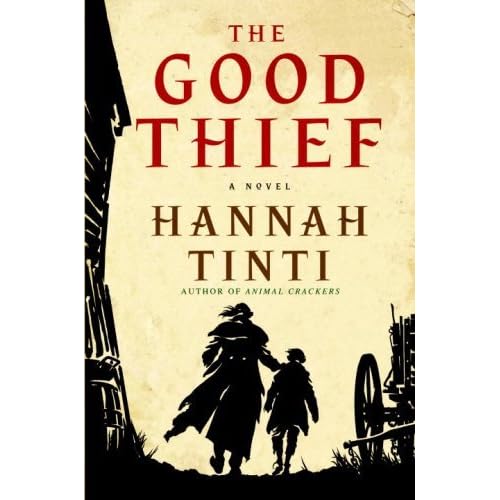The Good Thief

Ren is a twelve-year old, one-handed orphan, living in 19th century New England. He was left at a Catholic orphanage as an infant, pushed through a wooden door in the gate one rainy night, and spends his time wondering who his parents are, why they left him here, and if he will ever be adopted.
The gate was hinged to open one way – in. When Ren pushed at the tiny door with his finger, he could feel the strength of the wooden frame behind it. There was no handle on the children’s side, no groove to lift from underneath. The wood was heavy, thick, and old – a fine piece of oak planed years before from the woods beyond the orphanage. Ren liked to imagine he felt a pressure in return, a mother reaching back through, changing her mind, groping wildly, a thin white arm.
Because of his missing hand, Ren doesn’t expect that he will ever be adopted. The farmers in the area who adopt most of the children are looking for a child who can work on the farm. Children who are not adopted are generally sent to the army, and never heard from again. It is because of his hand, however, that he is adopted by a man claiming to be his older brother, a scam artist who looks at Ren’s missing hand as a way to induce sympathy from strangers in the form of handouts.
Thus start the adventures of Hannah Tinti’s The Good Thief, sort of a mix of Charles Dickens and Robert Louis Stevenson, full of strange outcasts and thieves. There are unlucky twins, dwarfs, deaf landladies, harelips, murderers and grave robbers. Throughout the story, Ren’s inner goodness shines through, though he is mostly powerless to change the events that are unfolding around him. And deep down, he is looking for a family. Not just a group of rag-tag thieves who accept him as one of them, but a mother and a homey environment filled with love and safety. I really enjoyed this book a lot, really liked Ren, and found myself hoping that he finds the answers he seeks.
8 Comments
CG
I think I will like that book! Is it from the library?
J
I bought it…the library might have it. I’ve already promised to loan it to someone, but I’ll loan it to you after that if you’d like. 🙂
Wanderlust Scarlett
1. I LOVE 3 cups of tea; I see that you are reading that.
2. THIS looks like such a great read! Thank you so much for mentioning it! I am in the market for a new book, as usual. ;D
YAY!
Scarlett & Viaggiatore
Dad Who Writes
Another one! I have such a backlog of novels-I-need-to-read from your site.
Casey
It does sound very Dickens, but very good. I haven’t read Three Cups of Tea yet, but I gave it to a friend for Christmas and she said it changed her life 🙂
Leslie
Is it suitable for the 10-12 crowd?
J
A mature 10 – 12, There were a few semi-upsetting scenes of death. Closer to 12 I would think, not a young 10.
blackwatertown
Sounds an interesting read.